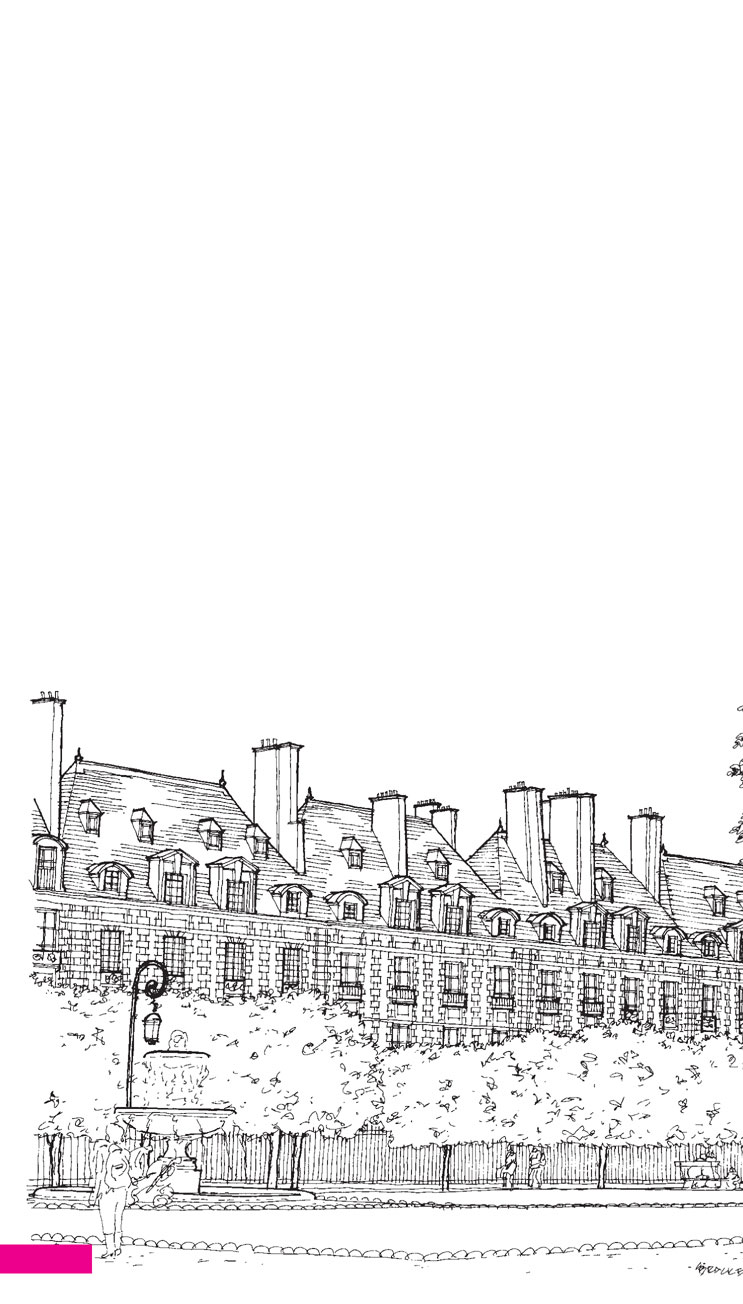No. 8. No. 6 was home to Victor Hugo for 16 years. Founded as a museum in 1902 (the centenary of Hugo’s birth), Maison de Victor Hugo commemorates the life and work of this famous French poet, dramatist and novelist who is most renowned for The Hunchback of Notre Dame and Les Misérables. From 1832 to 1848 he rented a 280-square-metre apartment on the second floor of the building formerly known as the Hôtel Rohan-Guéménée. He lived here with his wife and four children and this is also where he wrote most of Les Misérables. The museum contains reconstructions of his rooms, with drawings, books and mementos from his childhood right up to his exile between 1852 and 1870. It also hosts temporary exhibitions dedicated to the writer.
Leave Place des Vosges via the small door in the southwest corner and you will find yourself in the gardens of the Hôtel de Sully (main entrance is at No. 62 rue St-Antoine). This Renaissance-style hotel, with its pretty gardens and orangery, was built for financier Mesme Gallet between 1625 and 1630 and was designed by architect Jean Androuet du Cerceau. Gallet was a notorious gambler and is said to have lost his entire fortune in one night’s gaming. He sold the hotel to the Duc de Sully in 1634. The Duc was Henri IV’s chief minister, and it was he who added some of the interior decoration as well as the orangery. His grandson added a west wing in 1660, overlooking the garden. The Sully family owned the house until the 18th century after which time it passed through many different hands, suffering much damage, before becoming an historical monument in 1862 and a gradual process of restoration began. It has belonged to the state since 1944 and is an exhibition space linked to the Jeu de Paume which shows contemporary photography and film.
Place des Vosges
34

